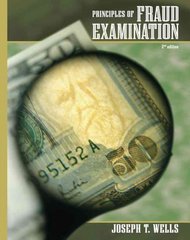Question
Fill in the table using the following information. Assets required for operation: $9,600 Firm A uses only equity financing Firm B uses 40% debt with
Fill in the table using the following information. Assets required for operation: $9,600 Firm A uses only equity financing Firm B uses 40% debt with a 6% interest rate and 60% equity Firm C uses 50% debt with a 10% interest rate and 50% equity Firm D uses 50% preferred stock financing with a dividend rate of 10% and 50% equity financing Earnings before interest and taxes: $960 If your answer is zero, enter "0". Round your answers for monetary values to the nearest cent. Round your answers for percentage values to one decimal place. A $ $ Debt Preferred stock Common stock Earnings before interest and taxes Interest expense Earnings before taxes $ Taxes (40% of earnings) Preferred stock dividends Income available to common stockholders $ Return on common stock B C D $ $ $ $ $960.00 $960.00 $960.00 $960.00 $ $ % $ % % % What happens to the common stockholders' return on equity as the amount of debt increases? Why is the rate of interest greater in case C? Why is the return lower when the firm uses preferred stock instead of debt? Other things equal, the return on common stock -Select- as the firm uses financial leverage. As the firm becomes -Select- financially leveraged ( -Select- in financial risk), the rate of interest will increase. The return is lower when the firm uses preferred stock instead of debt because the -Select- are not tax deductible as opposed to the -Select- Which type of financing involves less risk for the firm? Assuming a comparable use, -Select- is less risky to the firm. Fill in the table using the following information. Assets required for operation: $4,400 Case A-firm uses only equity financing Case B-firm uses 30% debt with an 8% interest rate and 70% equity Case C-firm uses 50% debt with a 12% interest rate and 50% equity If the answer is zero, enter "0". Round your answers for monetary values to the nearest cent. Round your answers for percentage values to one decimal place. A B Debt outstanding $ $ Stockholders' equity $ Earnings before interest and taxes $440 $440 $440 Interest expense $ $ Earnings before taxes $ Taxes (40% of earnings) Net earnings Return on stockholders' equity % $ % % What happens to the return on the stockholders' equity as the amount of debt increases? Why did the rate of interest increases in case C? The return on stockholders' equity -Select- as the firm becomes -Select- financially leveraged. The rate of interest increase in case C due to the -Select- in the financial risk

Step by Step Solution
There are 3 Steps involved in it
Step: 1

Get Instant Access to Expert-Tailored Solutions
See step-by-step solutions with expert insights and AI powered tools for academic success
Step: 2

Step: 3

Ace Your Homework with AI
Get the answers you need in no time with our AI-driven, step-by-step assistance
Get Started


